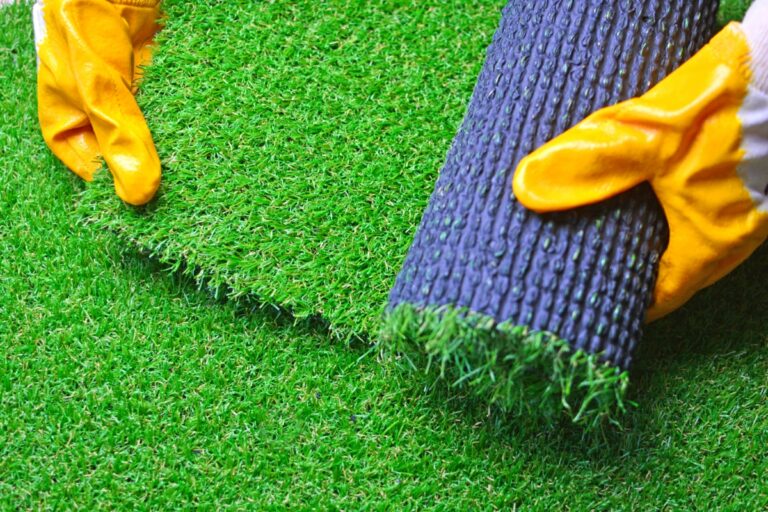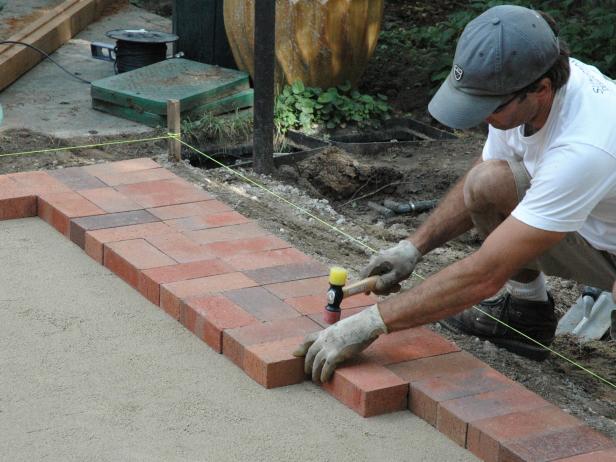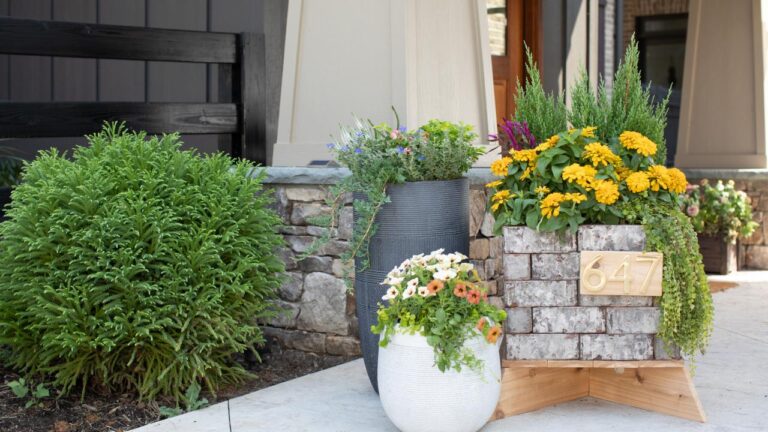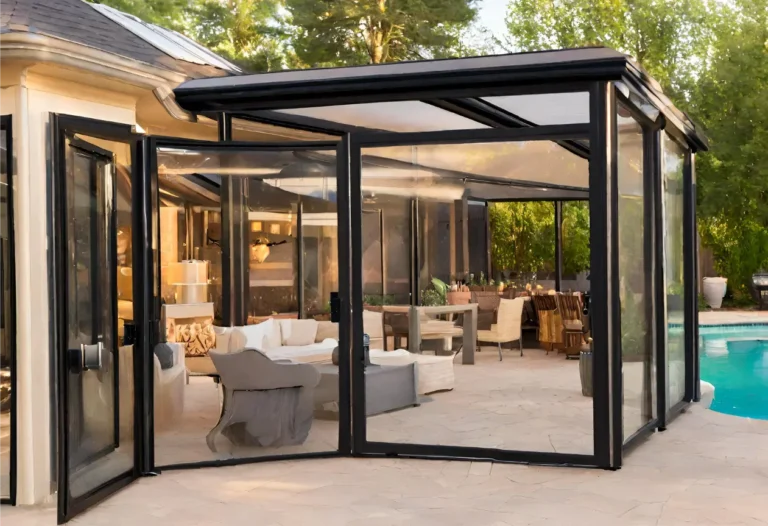Best Materials for Small Patio Furniture
Creating a small but stylish patio is more than just picking out the cutest chairs or the trendiest tables. It’s about finding the right balance between form and function, between beauty and durability.
As someone who spends a lot of time crafting outdoor spaces, I know firsthand that the material of your furniture can make or break your patio experience. You want something that looks great, feels comfortable, and stands up to the elements.
Let’s explore the best materials for small patio furniture, so you can make the most of your outdoor haven.

Pros and Cons of Popular Outdoor Furniture Materials
When it comes to outfitting a small patio, every decision counts, and that includes the materials you choose for your furniture. The material will influence not just the look and feel of your space, but also how long your furniture will last and how much maintenance it will require. Let’s break down the most popular materials you’ll come across, so you can choose what’s right for you.
Wicker vs. Rattan: What’s Best for You?
Wicker and rattan are often mentioned in the same breath, but it’s important to understand the difference. Wicker refers to the weaving technique used to create the furniture, while rattan is the material traditionally used in this process. Nowadays, wicker furniture can be made from a variety of materials, including synthetic versions designed to mimic the look and feel of natural rattan.

Pros of Wicker and Rattan:
- Aesthetic Appeal: There’s something undeniably charming about wicker furniture. Whether it’s the natural warmth of rattan or the clean lines of synthetic wicker, these materials add a cozy, inviting vibe to any small patio.
- Lightweight: One of the biggest advantages of wicker furniture is its portability. If you have a small patio, being able to easily move your furniture around is a huge plus.
- Durability: Synthetic wicker, in particular, is built to withstand the elements. It won’t fade under the sun or deteriorate in the rain, making it a low-maintenance option for outdoor spaces.
Cons of Wicker and Rattan:
- Maintenance: Natural rattan, while beautiful, does require some upkeep. It needs to be protected from excessive moisture and sun exposure to prevent cracking and fading.
- Cost: Quality wicker furniture, especially those made from natural rattan, can be on the pricier side. However, it’s an investment in style and comfort that can be worth every penny.
- Weight Capacity: Wicker furniture, especially natural rattan, might not be as robust as metal or hardwood furniture. It’s important to consider this if you’re looking for something that can handle heavy use.
Metal Furniture: Lightweight vs. Durable Options
Metal furniture is another great option for small patios, offering a sleek, modern aesthetic that can complement almost any style. However, not all metals are created equal. Depending on your needs, you might prefer something lightweight and easy to move, or something more durable that can withstand the test of time.
Lightweight Options: Aluminum
- Pros: Aluminum is a popular choice for outdoor furniture because it’s lightweight and easy to move. This makes it ideal for small patios where you might need to rearrange furniture to fit your space or accommodate guests. Aluminum is also rust-resistant, which is a huge advantage if you live in a humid or coastal area.
- Cons: While aluminum is durable, it’s not indestructible. It can be prone to dents and scratches, especially if you have children or pets. Also, because it’s so light, it might not feel as sturdy as heavier materials.
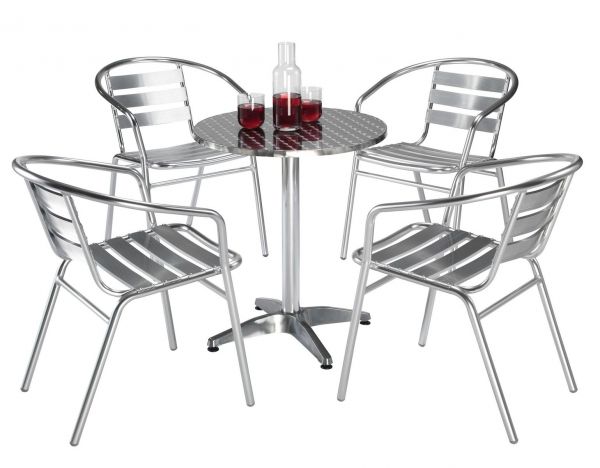
Credits to The Essex Group
Durable Options: Steel and Iron

- Pros: If you’re looking for furniture that will last a lifetime, steel and wrought iron are excellent choices. These materials are incredibly sturdy and can handle the wear and tear of daily use. They also have a classic, timeless look that can add a touch of elegance to your outdoor space.
- Cons: The downside of steel and wrought iron is their weight. These pieces are heavy, making them difficult to move. They also require regular maintenance to prevent rust, especially if you live in an area with high humidity or frequent rain.
Weather Resistance and Longevity
Outdoor furniture needs to withstand everything Mother Nature throws at it. Whether it’s scorching sun, pouring rain, or freezing temperatures, the material you choose should be up to the challenge. Weather resistance and longevity are key factors to consider, especially if you want your small patio furniture to last for years to come.
Understanding UV Protection and Rust Resistance
UV Protection: Prolonged exposure to the sun can cause furniture to fade, crack, or weaken. That’s why it’s important to choose materials that offer UV protection. For example, synthetic wicker is often treated to resist UV rays, preventing it from fading or becoming brittle over time. Similarly, aluminum furniture is typically coated with a UV-resistant finish that helps preserve its color and integrity.
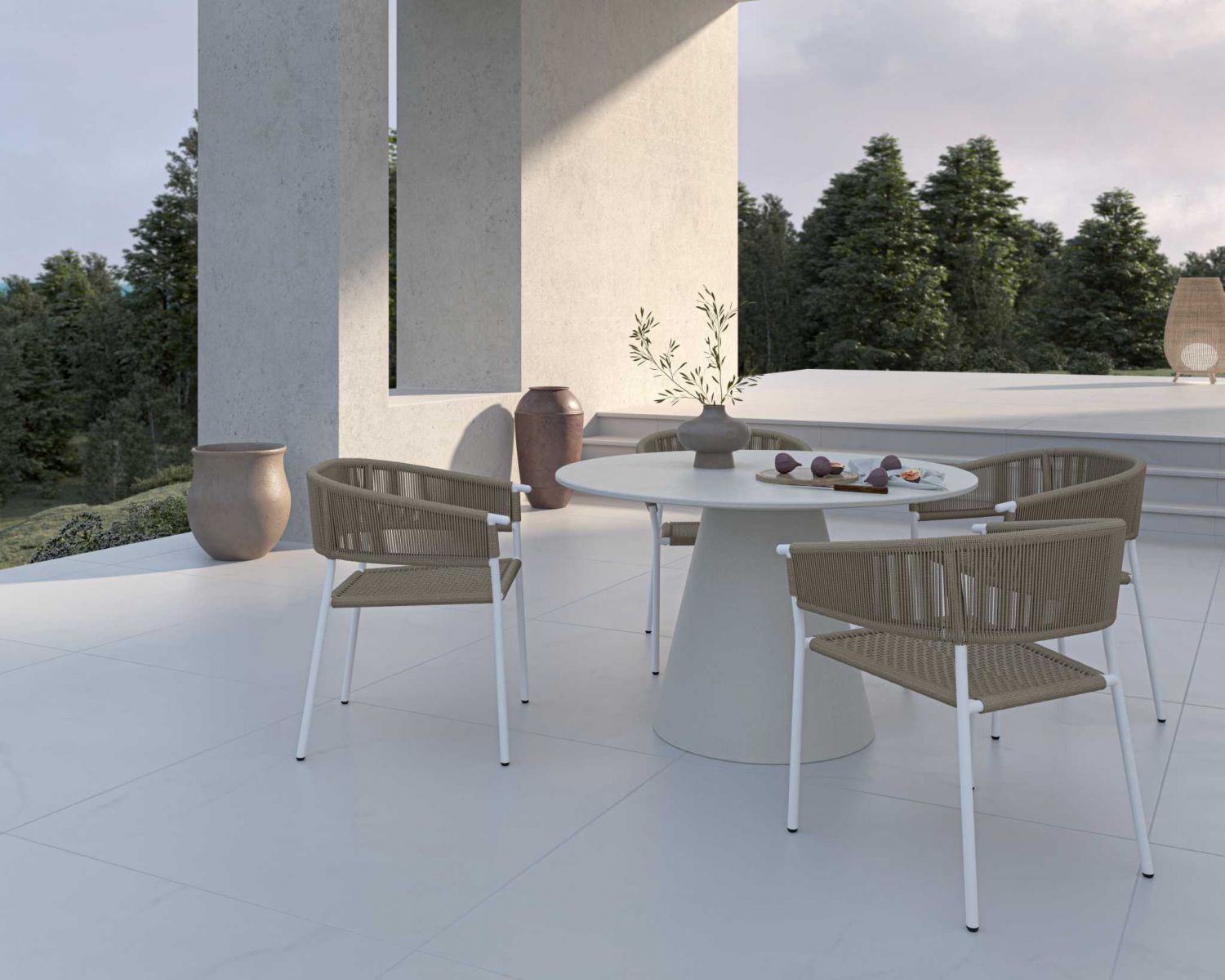
Rust Resistance: Rust is the enemy of metal furniture, especially in humid or coastal environments. While aluminum is naturally rust-resistant, steel and wrought iron need a protective coating to keep rust at bay. This coating can wear off over time, so it’s important to reapply it as needed to extend the life of your furniture. Regular maintenance, such as wiping down metal surfaces and covering your furniture during rainstorms, can also help prevent rust.

Seasonal Considerations
Your location and the climate you live in should play a big role in your choice of patio furniture material. If you live in a place with harsh winters or sweltering summers, you’ll need to take extra steps to protect your furniture.
Winter Considerations:

- Storage: Some materials, like wicker and wood, can be damaged by extreme cold and moisture. If you live in an area with harsh winters, consider storing your furniture indoors during the off-season. Alternatively, invest in high-quality furniture covers to protect your pieces from snow and ice.
- Durability: Metal furniture, especially those made from steel or wrought iron, can handle cold temperatures but might need extra protection from moisture to prevent rust. A simple coat of wax can go a long way in preserving the finish.
Summer Considerations:
- UV Exposure: In hot climates, UV protection is essential. Materials like synthetic wicker or UV-coated metal are your best bet for withstanding the intense summer sun. These materials won’t fade, crack, or weaken under prolonged exposure to UV rays.
- Heat Retention: Metal furniture can get extremely hot in direct sunlight, making it uncomfortable to sit on. To avoid this, consider adding cushions or seat covers, or opt for lighter colors that reflect rather than absorb heat.

Eco-Friendly Furniture Options
As more people become environmentally conscious, the demand for eco-friendly furniture options has grown. If you’re looking to reduce your environmental impact, there are several sustainable materials to consider for your small patio furniture.
Sustainable Wood:
- Pros: Wood is a classic choice for outdoor furniture, and when sourced sustainably, it’s also an eco-friendly option. Woods like teak, eucalyptus, and cedar are naturally resistant to rot and insects, making them ideal for outdoor use. These woods are often harvested from responsibly managed forests, ensuring that the ecosystem remains balanced.
- Cons: While sustainable wood is a great choice for the environment, it does require regular maintenance to keep it looking its best. You’ll need to oil or seal the wood periodically to protect it from moisture and UV damage. Additionally, wood furniture can be more expensive than synthetic options, so it’s important to consider your budget.
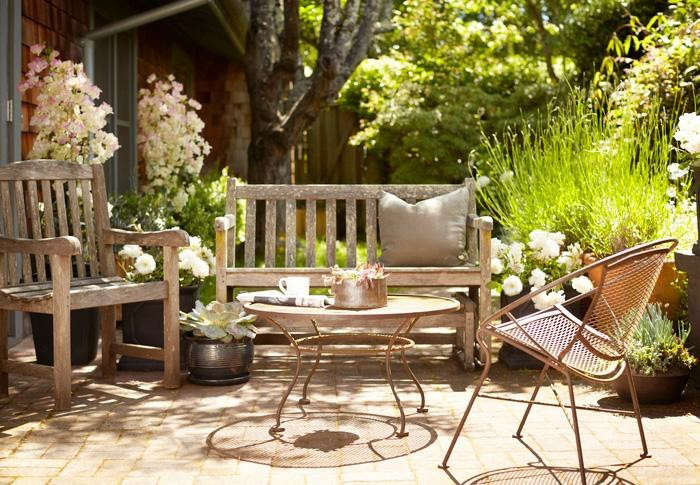
Recycled Materials:
- Pros: Furniture made from recycled plastics is an excellent eco-friendly option. Not only does it keep plastic waste out of landfills, but it’s also incredibly durable and weather-resistant. These materials are often designed to mimic the look of natural wood or wicker, so you don’t have to sacrifice style for sustainability.
- Cons: While recycled plastic furniture is low-maintenance and long-lasting, it can sometimes look less authentic than natural materials. However, the trade-off is worth it if you’re looking for a piece that will stand the test of time with minimal environmental impact.

The Versatility of Recycled Plastics
One of the most versatile and eco-friendly options for small patio furniture is recycled plastic. This material is made from post-consumer plastic waste, like milk jugs and water bottles, which are transformed into durable outdoor furniture. Not only does this process keep plastic out of landfills, but it also produces furniture that is resistant to the elements and requires very little maintenance.

Advantages of Recycled Plastics:
- Durability: Recycled plastic furniture can withstand harsh weather conditions, including intense sunlight, rain, and snow. It doesn’t rot, crack, or splinter, making it a long-lasting option for your patio.
- Maintenance: Unlike wood or metal, recycled plastic doesn’t need to be sealed, painted, or treated to keep it looking good. A simple wipe-down with soapy water is usually all that’s needed to keep it clean.
- Variety: Recycled plastic furniture comes in a wide range of colors and styles, so you can easily find something that fits your aesthetic. Whether you prefer the look of wood or something more modern, there’s likely a recycled plastic option that will meet your needs.
Eco-Friendly Textiles
In addition to furniture, you might also consider eco-friendly textiles for your patio cushions, pillows, and umbrellas. Materials like organic cotton, recycled polyester, and natural fibers like hemp or jute are all sustainable choices that can add comfort and style to your outdoor space.
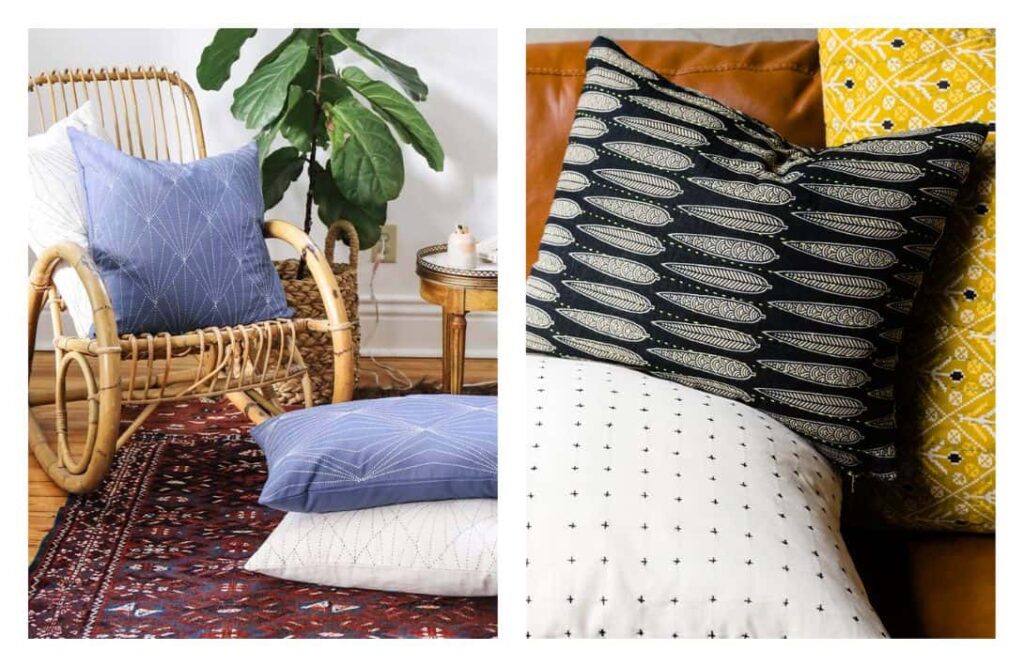
Advantages of Eco-Friendly Textiles:
- Sustainability: Choosing textiles made from natural or recycled materials reduces your environmental impact. These fabrics are often produced using fewer chemicals and less water than traditional textiles.
- Comfort: Eco-friendly textiles are not only better for the planet, but they’re also incredibly comfortable. Organic cotton, for example, is soft and breathable, making it a great choice for cushions and pillows.
- Aesthetic Appeal: Many eco-friendly textiles come in beautiful colors and patterns, allowing you to personalize your patio space without compromising on style.
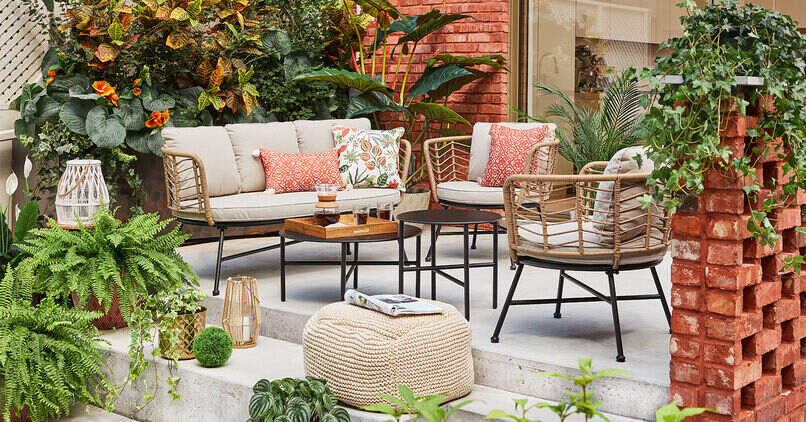
Conclusion
Selecting the best material for your small patio furniture is about more than just aesthetics—it’s about choosing pieces that will stand the test of time, withstand the elements, and align with your personal values. Whether you’re drawn to the natural charm of wicker, the modern durability of metal, or the sustainability of recycled materials, there’s an option that’s perfect for your patio.
As you plan your outdoor space, remember to consider how each material will perform in your specific environment. Think about the climate you live in, how much maintenance you’re willing to do, and how you want your patio to look and feel. And don’t forget, your patio is a reflection of your personal style—a place where you can relax, entertain, and enjoy the beauty of the outdoors.
By taking the time to choose the right materials, you’ll create a small patio that’s not only functional but also a true extension of your home. With the right furniture, your patio can become a cozy, inviting retreat where you can unwind after a long day, host friends and family, or simply enjoy a quiet morning coffee.
Disclosure: Our blog contains affiliate links to products. We may receive a commission for purchases made through these links. However, this does not impact our reviews and comparisons. We try our best to keep things fair and balanced, in order to help you make the best choice for you.


